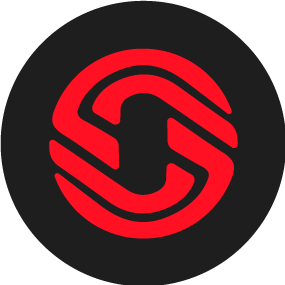Business digitalization platform with open source.
ZHCash is built upon the innovations of Bitcoin and Ethereum with some significant differences.
Technical Information And Features
Basic Quantum core. Hybrid algorithms ZTXO (UTXO), POS, DPOS, DPG. Block formation time – 120 seconds; Block size – 2MB; Total number of coins – 10 billion ZHC; Block reward 800 ZHC - ~ 1%; Consensus - Proof Of Stake. DGP governance protocol. Full compatibility and support for EVM and x86 virtual machines. Programming languages: Solidity, C/C++, Rust, Python. Full support and compatibility with ERC20, ERC721, GO, C, C++, C# & Java.
We offer an open-source blockchain platform for creating decentralized applications powered by smart and intelligent contracts. ZHCash is a fork of Bitcoin, enhanced with the Ethereum Virtual Machine (EVM), combining the best of both worlds. We utilize the UTXO (Unspent Transaction Output) model, known for its high security and efficiency, along with the Ethereum Virtual Machine (EVM), renowned for its smart contracts. This means that ZHCash is more than just a cryptocurrency. It empowers businesses to use the public ledger for tracking products and services. The ability for organizations to automatically confirm customer purchases and provide ongoing support is a key feature of our platform. Interest in blockchain technology is on the rise, especially in the financial sector. Currently, many banks are securing blockchain patents, indicating their intention to integrate this technology into their products and services. One of ZHCash's primary objectives is to change how applications store data. Instead of centralized data storage on a single server, applications running on the ZHCash platform store data as transactions on the blockchain. This enables the automation of transaction processes. For instance, a car or house can be sold automatically as soon as the second party fulfills the predefined conditions. This eliminates the need for real estate agents, brokers, and even lawyers. A significant achievement of ZHCash is the ability to ensure the execution of transaction terms without intermediaries. We launched our test network in 2018 and have been continuously evolving and improving ever since.
The network started: 4.12.2019
ZHCash is an open blockchain platform with open source aimed for business digitalization and creating decentralized applications. It supports the Solidity programming language (ZRC - unified standards ERC20, ERC721, etc.). Unlike most other platforms, ZHCash allows businesses to deploy their own blockchain and digital assets in just a few clicks. Even a novice developer can do this using a set of intuitive tools. The main advantages of the platform are as follows: minimal requirements for the customer’s initial data, simplicity in creation of all types of tokens and coins, as well as of a blockchain infrastructure, and financial affordability. Coins can be used to implement random digital signs such as shares, bonds, cryptocurrencies and tokens, intellectual property, etc., as well as real objects.
ZRC - master contracts
The ZHCash platform supports smart contracts written for the Ethereum virtual machine and for the x86 virtual machine, while providing backward compatibility with Ethereum contracts.
Special features: UTXO, POS, DPOS. DGP control protocol. EVM + x86 virtual machine. Programming languages: Solidity, C / C ++, Rust, Python. Full support and compatibility with ERC20, ERC721, GO, C, C ++, C # & Java.
DApps and DGP governance protocol
Thousands of the largest companies in the world are ready to invest billions of dollars in blockchain development. This places decentralized applications (Dapps) among of the most promising IT-spheres in the nearest future. Decentralized applications are increasingly attracting the attention of developers around the world. Unlike centralized apps, Dapps directly connect users and developers without involving a mediator. Developing of decentralized applications of different kinds (DApps) with high level of protection, created on the blockchain basis and working with smart contracts, allows implementing more functions, including financial ones, for managing fiat and digital assets.
Unlike Ethereum, these are new types of contracts, very similar to SO (standing order of the bank). They are performed automatically when a certain algorithm is applied. For example: the client provides the bank with a monthly payment, and the smart contract performs the same function, but the payment is automatically distributed to spheres necessary to close all the financial issues of the bank. These are more complex mechanisms, but at the same time the most promising ones. Decentralized Governance Protocol (DGP) makes it possible to change certain blockchain settings using smart contracts. The Account Abstraction Layer (AAL) decouples applications from the underlying protocol, keeping the blockchain running while giving the opportunity to add more capabilities to smart contracts in the future. The x86 virtual machine will support C, C ++, Rust, Python, and other programming languages, helping to adapt smart contracts. The UTXO model provides a simple payment verification (SPV) that allows customers to verify transactions without deploying a full node.
DGP governance protocol. The size of each block is set by the DGP protocol and smart contracts. The Decentralized Governance Protocol (DGP) is designed to let users change individual blockchain parameters using appropriate smart contracts. Moreover, this technology allows changing the parameters of the blockchain without any disruption to the ecosystem. New settings immediately enter into force without requiring additional software downloads or intervention from shareholders and node operators. The DGP operation principle is pretty straightforward. First, one of the parties with access to the blockchain uses the DGP to propose a change to a certain parameter. Then, all other parties vote, and if the majority approves the proposal, the system will change this parameter. After that the changed data will be converted to a standard format and placed in a separate storage, from where it can be directly accessed by the blockchain software.

